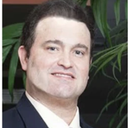I have conducted fat grafting few years ago. And I am going to do mammogram later. I hope the test could not tell others that I have done fat grafting, is that possible?
Answers (4)
From board-certified doctors and trusted medical professionals
Dr. Lawrence Iteld, MD

Dr. Lawrence Iteld, MD
Board Certified Plastic Surgeon
Answer
Dr. Kenneth Hughes, MD

Dr. Kenneth Hughes, MD
Board Certified Plastic Surgeon
Answer
Dr. Connie Hiers, MD, FACS
Dr. Connie Hiers, MD, FACS
Board Certified Plastic Surgeon
Answer
Dr. Karol A. Gutowski, MD, FACS
Dr. Karol A. Gutowski, MD, FACS
Board Certified Plastic Surgeon
Answer
More Breast Fat Transfer Questions
See all Breast Fat Transfer Q&AWE SEND PRETTY
EMAILS
What’s trending? Who’s turning heads? Which TikTok myths need busting? We’ve got you. No fluff, no gatekeeping—just real talk. Get our free, unfiltered newsletter.